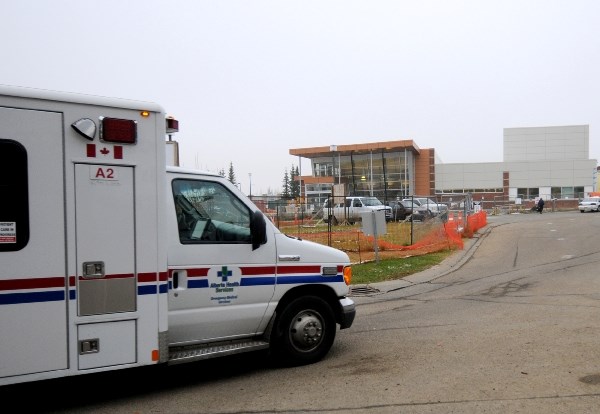It's been less than a month since Alberta Health Services (AHS) launched new protocols designed to reduce pressure on emergency rooms but the new measures are showing some encouraging early signs, says the organization's top official.
"It's fair to say that we've made some progress, but it's fair to say also that there is much more work that needs to be done," Chris Eagle, acting president and CEO of AHS, said during a press conference on Friday.
According to AHS, protocols may be activated when one or more of the following triggers has been met:
• The percentage of blocked emergency department care spaces (due to patients awaiting admission, diagnostics or consults) exceeds 35 per cent;
• When there are no additional beds in an emergency department to treat patients arriving with the most critical injuries or illnesses;
• When the hospital is full;
• When the percentage of emergency department occupancy exceeds 110 per cent;
• There are seven or fewer EMS units (in Edmonton or Calgary) available to transport patients to hospital;
• More than five patients have been waiting eight hours or longer for a hospital bed since the decision was made to admit them (number dependent on facility size).
Sturgeon triggers
At the Sturgeon Community Hospital, emergency room physician Dr. Daniel Hryciuk said overcapacity protocols were triggered when 35 per cent of the beds were blocked with emergency in-patients (EIP).
"We as emergency physicians or head nurses will contact the bed managers and they will start to work on it but it takes time to get those movements," Hryciuk said.
"I've come to work a couple of days at seven in the morning and both times 12 of our beds were blocked and it takes until the middle of the afternoon until we can get that down to 35 per cent, which is about eight beds," he said.
"I'm not privy to the actual data so I don't know if there has been a true change or not," Hryciuk said.
Hospital officials did not respond to the Gazette's request for specific data on the number of times the protocols have been used at the Sturgeon since the launch.
Prior to the protocols being enacted Hryciuk said last month nothing would have been done. He said the protocols would work as long as patients can be moved out of emergency.
According to Hryciuk, the overcapacity protocols are nothing new and were tried two years ago at the University of Alberta, Royal Alexandra, Grey Nuns and Misericordia hospitals in Edmonton.
"We were left out of it because we were a rural hospital but at least we're included now in the cross-Alberta overcapacity protocols," he said.
"There is only one solution and that solution is build long-term care beds, not aging in place beds, assisted living beds, but long term care beds and that's the only solution that will ever make this work."
Wendy Tanaka-Collins, site manager at the Sturgeon, said last month the facility was working on opening four additional beds in one of the hospital's medicine units, which would bring the hospital to 10 overcapacity spaces.
The overcapacity protocols, which went in effect on Dec. 20, are only one element of improving access to emergency departments, Eagle said.
He said creating more spaces in the community for seniors is another aspect to reducing pressure on emergency rooms across the province.
Between September and Jan. 14, Eagle said hospitals in Edmonton have seen "roughly a halving" of the number of patients waiting for emergency department admission.
Last September, there were 80 patients on average waiting for admission from emergency room to a hospital bed at the major Edmonton hospitals every morning.
In October, this number increased to 84 before being reduced to 71 in November, 48 in December and 44 as of Friday.
The numbers were slightly lower in Calgary.
"We're far from out of the woods," Eagle said on Friday.
He warned of a potential influx of patients due to seasonal influenza.
Eagle said health care workers are implanting the protocols in both a formal and proactive way, often when some of the triggers are close to being met.
"We see that as being a very good thing," he said.
"We're actually dealing with problems prospectively."



